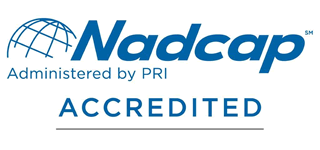Concurrent engineering is a process that allows businesses to optimize their product development process. It involves the collaboration of multiple teams working on the same product at the same time.
Working with a concurrent engineering team can provide a number of benefits to your military or defense organization. By having groups of experienced engineers reviewing each component of your solution in-depth, you can ensure that your finished product will be designed to perform at the highest standards possible while generating savings for your organization over time.
Today, we are going to review some of the key benefits of concurrently engineered solutions for military and defense organizations. First, let’s explore more about the differences between concurrent and sequential engineering.
Concurrent vs. Sequential Engineering
When discussing engineering, there are two primary approaches: concurrent and sequential. Both approaches have their own strengths, and the best approach for a given project will vary depending on specific factors identified in the earliest stages of a project.
Concurrent engineering focuses on simultaneously addressing all aspects of a project, from design to manufacturing to testing. One of the advantages of this approach is that it can help to speed up the overall timeline for a project with everyone involved all working at the same time.
Sequential engineering, on the other hand, takes a more linear approach. Each stage of the process must be completed before moving on to the next. This can help to simplify coordination among team members, and it can also make it easier to isolate problems at each stage of the process. However, sequential engineering can often take longer overall, cost more, and it may be more difficult to make changes later on in the process.
Benefits of Concurrent Engineering
Multiple Experts Working on Components Simultaneously
The primary benefit of having multiple experts working on the same product simultaneously is that it allows for a more efficient development process. Each team can focus on its own area of expertise and then come together to create a final product that is more polished and refined.
During the development process, each team can also cross-examine each other’s work to ensure that all specifications and physical components are compatible. This enables a more efficient revision process to ensure that both prototypes and production-ready models alike are to your standards before the process has concluded.
Faster Time to Market
Another significant advantage of concurrent engineering is that it can help businesses get their products to market faster. By working on different aspects of the product at the same time, you can shave off weeks or even months from the development timeline.
This is especially beneficial for military and defense organizations that may require a shorter timeframe for development. You will have more time to review and test these solutions in the field rather than waiting for them to arrive.
Improved Product Quality
Since multiple teams are working on the same product concurrently, there is a higher likelihood of identifying and correcting errors in the design early on. This allows for more refined and improved product quality as each team can offer feedback and suggestions for improving specific components.
Additionally, the concurrent engineering process can help to create a more holistic product. By taking into account the needs of different teams from the beginning, you can design a product that is more user-friendly and cohesive. This is opposed to products that are designed piecemeal where each team only focuses on their own area without considering how it will impact the final product.
Reduced Development Costs
One of the most enticing benefits of concurrent engineering is that it can help military and defense organizations save a significant amount of money during the product development process. By working on different aspects of the product simultaneously, you can avoid having to go back and make changes to already completed work.
This can save you both time and money on development costs. More engineers are servicing your organization at a single point in time, creating a more efficient use of your investment.
Full Documentation and Specifications
Concurrent engineering also allows for more advanced and detailed documentation and specification information. You can follow extensive records of the design, development, and production processes to ensure that your product meets all the necessary requirements.
This is essential for businesses that require a high degree of transparency, such as military and defense organizations. It also helps to improve communication between different teams working on the same project and equip your own teams in the field with more technical information for troubleshooting and problem-solving if needed.
Specialized Product Testing
Lastly, but no less important, concurrent engineering results in more testing throughout the entire design, development, and production processes. By testing each component as it is being designed, this can eliminate errors and produce a better finished solution for your organization.
This is vital for organizations that require their products to meet a high standard of quality, such as those in military and defense. Specialized product testing can help ensure that your product will perform as expected in the most demanding situations that can arise in the field.
Design Concurrently Engineered Solutions with Midcon
Midcon Wiring Solutions has developed customized, concurrently engineered cable assemblies for military and defense organizations since 1972. Each of our solutions is reverse-engineered from your exact specifications to ensure that it performs to the most rigorous conditions in the field.
To get started on your own concurrent-engineered solution, contact us today to get started.


